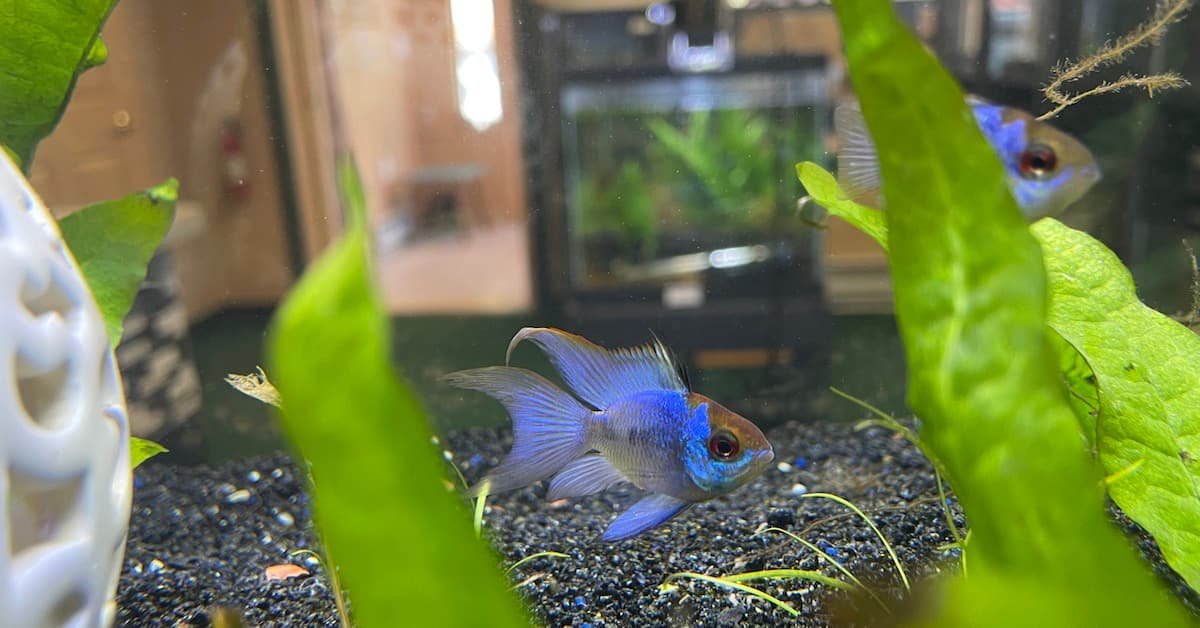Care Guide
About Cichlids
Cichlids represent a diverse and popular group of freshwater fish known for their vibrant colors, fascinating behaviors, and adaptability to various aquatic environments. Originating primarily from Africa, Central America, and South America, cichlids come in a myriad of species, each with unique characteristics. They are known for their intelligence and territorial behavior, which can vary significantly between species. Their popularity stems from their beauty, interesting social dynamics, and the rewarding challenge of caring for these captivating fish in a home aquarium setting.
Characteristics of the German Blue Ram
German Blue Ram Cichlids, scientifically known as Mikrogeophagus ramirezi, are popular freshwater aquarium fish prized for their striking colors, with hues ranging from electric blue to yellow and red accents. They are native to the Orinoco River basin in Venezuela and Colombia. These peaceful cichlids are named for their distinctive blue coloration and the horn-like projections on their heads.
Their bodies are compressed laterally, giving them a disc-like appearance, and they usually grow to around 2-3 inches in length. These cichlids have elongated dorsal and anal fins, and their pelvic fins are often more prominent in males. They are known for their playful and inquisitive nature, often engaging in social interactions within the aquarium.
Care and Feeding
Providing optimal care is crucial for the health and well-being of German Blue Rams. They require a well-established aquarium with plenty of hiding spots among rocks, driftwood, and plants. Water parameters should be maintained at a temperature of 78-85°F (25-29°C), pH of 6.0-7.5, and soft to moderately hard water. Regular water changes and filtration are essential for maintaining water quality.
German Blue Rams are omnivores and thrive on a varied diet. Offer them high-quality flake or pellet food supplemented with live or frozen foods such as bloodworms, brine shrimp, and daphnia. Feeding small portions multiple times a day helps mimic their natural feeding behavior and ensures they receive adequate nutrition.
Compatibility
While generally peaceful, German Blue Rams can be territorial, especially during breeding. They are best kept in pairs or small groups in a spacious aquarium with other peaceful species. Avoid housing them with aggressive or large fish that may intimidate or harm them. Good tank mates include Tetras, Rasboras, dwarf gouramis, and other peaceful cichlid species such as Apistogramma. Providing ample hiding places and visual barriers helps reduce aggression and promotes harmony among tank inhabitants.
In summary, German Blue Ram Cichlids are prized for their beauty, peaceful demeanor, and engaging behavior, making them a delightful addition to a well-maintained community aquarium. With proper care and attention to their specific requirements, these captivating fish can thrive and bring joy to aquarists of all levels.

